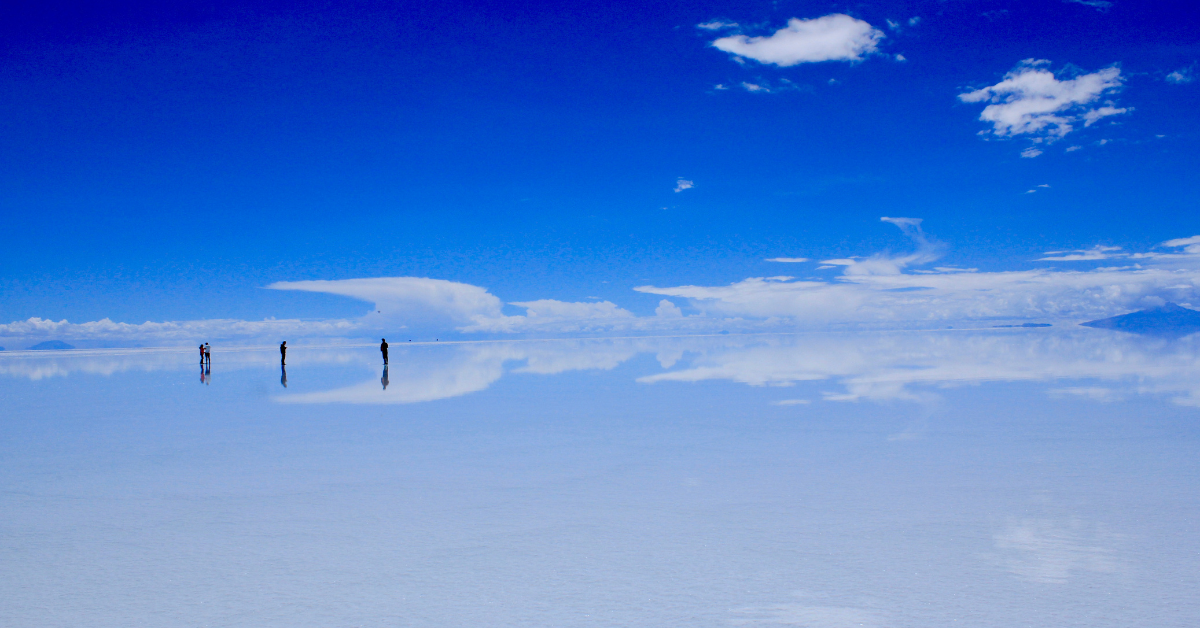Salar de Uyuni in Bolivia is one of the world’s most captivating natural wonders, often called the “Mirror of the Sky.” Japanese travelers tend to layer cultural meanings onto natural scenery, resulting in impressions that are both poetic and unique. This article explains those distinctly Japanese perspectives in a way that foreign visitors can appreciate.
The Unique Sensibility of Japanese Travelers
Japanese culture values impermanence and wabi-sabi, finding depth in fleeting natural moments. During the rainy season, when the salt flats turn into a giant mirror, the sky and land blend seamlessly. Standing there feels like being transported to another world. For Japanese visitors, this often becomes an experience of spiritual purification and release from daily life.
Moreover, Japanese people place high value on transient beauty. Just as cherry blossoms or snow scenes are cherished because they last only briefly, the mirrored world of Salar de Uyuni during the rainy season resonates as a symbol of fragility and fleeting beauty.
Differences Between Japanese and Foreign Impressions
Although everyone marvels at the landscape, the way it is perceived differs. Many foreigners focus on its grandeur and uniqueness, describing Salar de Uyuni as “a once-in-a-lifetime wonder.” In contrast, Japanese travelers often highlight its quietness and meditative qualities, seeing it as a kind of “mirror of the heart.”
| Perspective | Japanese Impressions | Foreign Impressions |
|---|---|---|
| Sense of Beauty | Fragility, stillness, inner peace | Vastness, overwhelming scale |
| Comparisons | Ink painting, dreamlike world | Outer space, movie scenes |
| Emotional Response | Calmness, meditative feelings | Excitement, astonishment, exhilaration |
| View of Nature | Resonance with seasons and transitions | Power and energy of raw nature |
Salar de Uyuni and Japanese Culture
The salt flats also resonate deeply with Japanese cultural aesthetics.
- Reflections on the water recall the traditional symbolism of mirrors in Japanese art and ritual.
- The vast white expanse echoes snowy landscapes and the blank spaces of ink paintings.
- The merging of sky and earth evokes Zen gardens and the spiritual essence of the tea ceremony.
For Japanese travelers, the experience is not just about sightseeing. It is about engaging with nature through the lens of culture, transforming the visit into “time that connects with the soul.”
How Japanese Visitors Suggest Experiencing Salar de Uyuni
While many tourists prioritize photography, Japanese visitors often emphasize “immersing in the moment”.
- Quietly gazing at the mirrored horizon
- Walking while attuning to wind and sound
- Waiting patiently for sunrise or sunset
The moments when dawn or dusk reflects across the surface are particularly moving for Japanese travelers. They embody the principle of “ichi-go ichi-e” (a once-in-a-lifetime encounter), reminding them that no two views are ever the same. This awareness turns the scene into a uniquely profound memory.
Preparing to Visit Salar de Uyuni
Located at an altitude of about 3,700 meters, the salt flats require careful attention to altitude sickness. Japanese travelers often prioritize health management, ensuring rest before arrival and keeping hydrated.
The large difference between daytime and nighttime temperatures also requires preparation. Daytime demands protection from UV rays, while at night, warm clothing is essential.
| Item | What Japanese Travelers Emphasize | Reason |
|---|---|---|
| Health | Rest and hydration for altitude sickness prevention | High elevation |
| Clothing | Hats and sunglasses by day, thick jackets at night | Extreme temperature shifts |
| Essentials | Sunscreen, personal medicine, camera | UV exposure and health needs |
Best Seasons to Visit Salar de Uyuni
The salt flats reveal dramatically different expressions depending on the season.
- Rainy Season (December to March)
The water surface creates the legendary sky-mirror effect. This is when most Japanese visitors come, seeking the dreamlike scenery. - Dry Season (May to October)
Salt crystals form hexagonal patterns, creating a geometric and almost otherworldly landscape.
For Japanese travelers, who cherish the changes of the seasons, both are meaningful.
| Season | Features | Japanese Impressions |
|---|---|---|
| Rainy | Sky perfectly reflected on the water | “Ethereal,” “like a dream world” |
| Dry | Crystalline hexagon patterns stretch endlessly | “Geometric beauty,” “like a snowy field” |
Conclusion
Salar de Uyuni fascinates visitors worldwide, but Japanese impressions are distinct. Foreign visitors tend to be moved by its grandeur, while Japanese travelers value its silence and impermanence, linking the natural spectacle to cultural aesthetics.
The key to experiencing it fully is not only to take photos but also to feel the air, the silence, and the passage of time. With thoughtful preparation and an appreciation of its seasonal variations, Salar de Uyuni becomes an unforgettable, once-in-a-lifetime encounter for any traveler.






